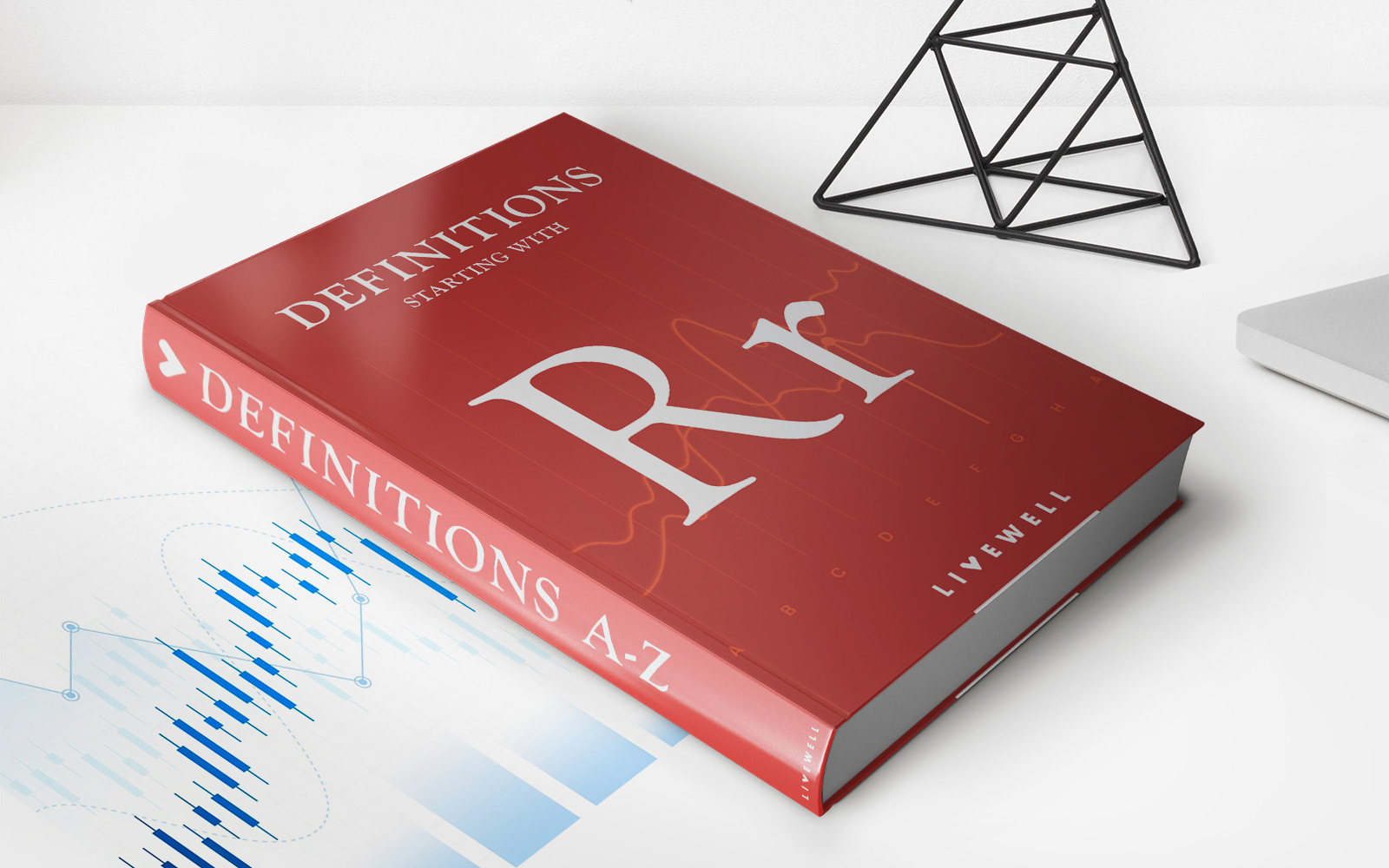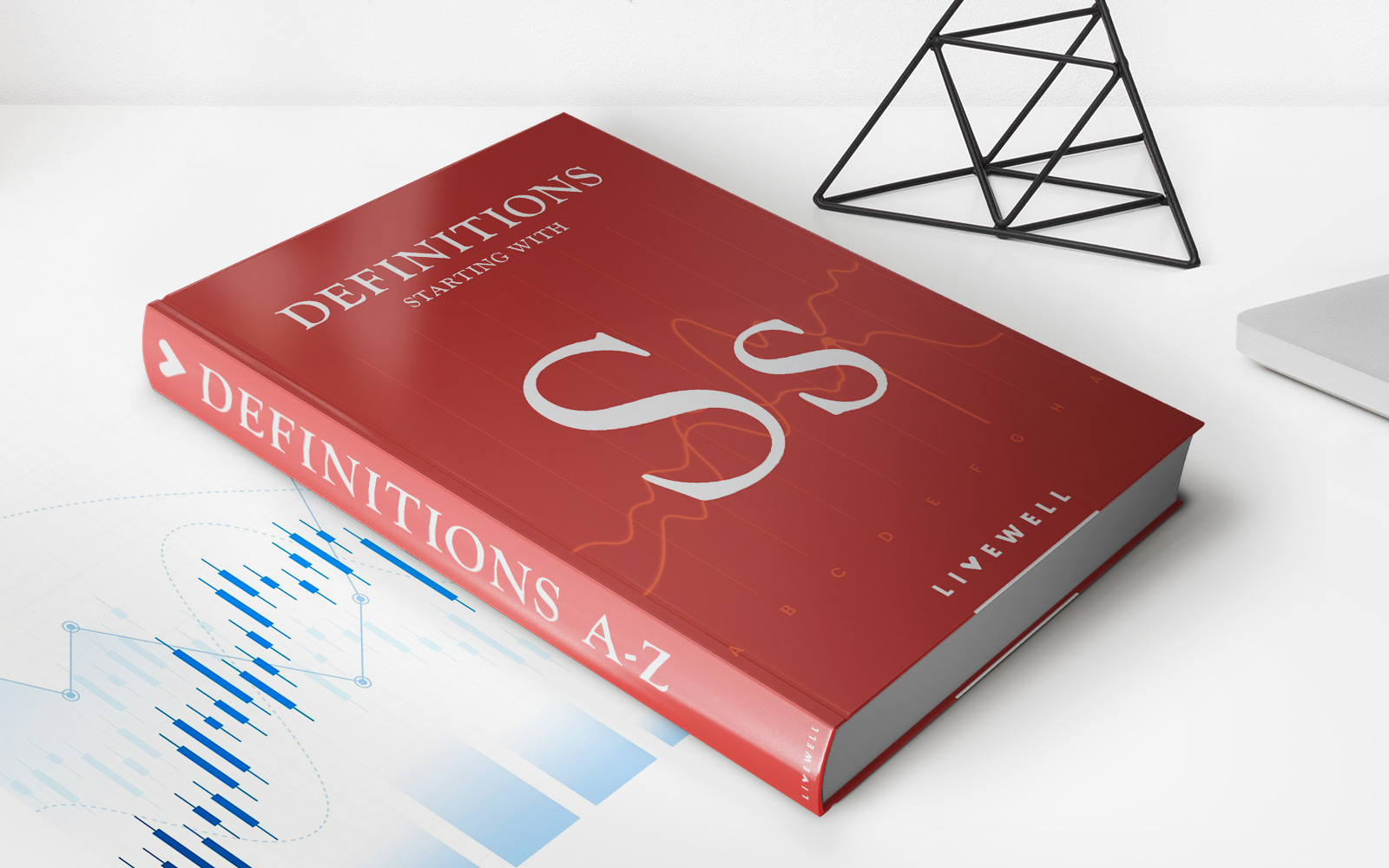

Finance
How Is Target Capital Structure Determined
Modified: February 21, 2024
Learn how target capital structure is determined in finance. Understand the factors and strategies involved for effective financial planning.
(Many of the links in this article redirect to a specific reviewed product. Your purchase of these products through affiliate links helps to generate commission for LiveWell, at no extra cost. Learn more)
Table of Contents
- Introduction
- Definition of Capital Structure
- Importance of Target Capital Structure
- Factors Influencing Target Capital Structure
- Financial Ratios Used for Determining Target Capital Structure
- Weighted Average Cost of Capital (WACC)
- Approaches to Determining Target Capital Structure
- Case Study: Target Capital Structure of Company XYZ
- Conclusion
Introduction
The capital structure of a company refers to the way in which it finances its operations, investments, and growth. It is a crucial aspect of financial management that determines the mix of debt and equity a company uses to fund its activities. The target capital structure, in particular, is the optimal combination of debt and equity that a company aims to achieve in order to maximize its value and minimize its cost of capital.
Understanding and determining the target capital structure is essential for companies as it has significant implications on their financial health, profitability, and risk profile. By striking the right balance between debt and equity, companies can optimize their capital structure and enhance shareholder value.
However, determining the target capital structure is not a one-size-fits-all approach. It varies across industries, sectors, and even companies within the same industry. A company’s target capital structure is influenced by a range of factors such as its industry dynamics, growth prospects, profitability, risk tolerance, and access to capital markets.
In this article, we will delve into the concept of target capital structure, its importance, and the key factors that influence its determination. We will also explore the financial ratios used to assess and determine the target capital structure and discuss the weighted average cost of capital (WACC) as a critical metric. Additionally, we will explore different approaches that companies adopt to determine their target capital structure.
To illustrate the practical application of target capital structure, we will present a case study of Company XYZ, a fictitious company operating in the manufacturing sector. By examining Company XYZ’s target capital structure, we can gain insights into the decision-making process and the impact it has on the company’s operations and financial performance.
Ultimately, understanding and effectively managing the target capital structure is a key strategic consideration for companies, and it plays a vital role in their long-term sustainability and success. By optimizing the mix of debt and equity, companies can position themselves for growth, manage their risk profile, and create value for their stakeholders.
Definition of Capital Structure
The capital structure of a company refers to how it finances its operations and investments through a combination of debt and equity. It represents the proportion of debt and equity in a company’s overall financing mix. Debt refers to funds borrowed from external sources, such as banks or bondholders, whereas equity represents ownership stakes held by shareholders.
The capital structure decision is fundamental to the financial management of a company as it determines the risk and return profile of the organization. A company’s capital structure can have a significant impact on its cost of capital, financial stability, flexibility, and overall value.
There are two main components of capital structure:
- Debt: Debt is a form of financing that involves borrowing money from lenders or issuing bonds. It can include bank loans, corporate bonds, or other forms of debt securities. The borrowed funds need to be repaid over a specified period, often with interest.
- Equity: Equity represents the ownership interest in a company. It is typically obtained by selling shares to investors, who become shareholders and have the right to share in the company’s profits and vote on certain corporate matters. Unlike debt, equity does not require repayment.
Companies choose their capital structure based on various factors, including their financial goals, risk appetite, industry norms, and available financing options. The right mix of debt and equity can help optimize the company’s financial performance, while an imbalanced capital structure can lead to financial distress or an inefficient cost of capital.
The capital structure is often represented by the debt-to-equity ratio, which is calculated by dividing the total debt of a company by its total equity. A higher debt-to-equity ratio indicates a higher level of debt relative to equity in the capital structure, signifying greater financial leverage. Conversely, a lower debt-to-equity ratio reflects a lower level of debt and a more conservative financial structure.
It is important to note that capital structure decisions should be made with careful consideration of the company’s risk tolerance, cash flow generation capabilities, and ability to meet debt obligations in both favorable and challenging economic environments. Striking the right balance between debt and equity can help companies optimize their financial resources, manage risk, and enhance their long-term sustainability.
Importance of Target Capital Structure
The target capital structure is a significant aspect of financial management for companies, as it holds several important implications for their operations, financial health, and overall performance. Here are some key reasons why determining and maintaining the target capital structure is crucial:
- Optimizing Cost of Capital: The target capital structure helps companies achieve an optimal balance between debt and equity that minimizes their cost of capital. By utilizing the right mix of debt and equity, companies can lower their overall cost of financing and maximize profitability.
- Enhancing Financial Stability: A well-planned target capital structure helps companies maintain financial stability and resilience. By avoiding excessive debt or an inadequate equity base, companies can withstand economic downturns, manage their financial obligations, and safeguard their operations.
- Maximizing Shareholder Value: The target capital structure plays a critical role in maximizing shareholder value. Companies that maintain an appropriate mix of debt and equity can optimize their returns on investment and generate higher profitability, resulting in increased shareholder wealth.
- Managing Risk: A balanced target capital structure helps companies manage risk effectively. Too much debt increases financial risk and debt-servicing obligations, while too much equity can dilute ownership and reduce earnings per share. A well-structured capital mix minimizes risks associated with both debt and equity.
- Access to Funding: Maintaining a target capital structure that matches industry norms and investor expectations improves a company’s ability to access external funding. Lenders and investors often prefer companies with stable and appropriate capital structures, making it easier for businesses to raise capital when needed.
- Flexibility for Growth: A well-designed target capital structure provides companies with the flexibility to pursue growth opportunities. It ensures that the company has adequate financial resources to invest in new projects, acquisitions, research, and development, supporting their expansion and long-term competitiveness.
- Compliance with Regulatory Requirements: Some industries have specific regulations or legal requirements governing capital structure. Compliance with these regulations is crucial to avoid penalties, maintain regulatory approvals, and ensure good corporate governance practices.
It is important to note that the target capital structure is not a static concept. Companies need to reassess and adjust their capital structure over time to align with changing business conditions, market dynamics, and financial goals. Regular reviews and adjustments help companies maintain an optimal capital structure that aligns with their evolving needs and maximizes their long-term financial performance.
Factors Influencing Target Capital Structure
The determination of the target capital structure is a complex decision that is influenced by various internal and external factors. Understanding these factors is crucial in establishing an optimal capital structure that aligns with a company’s goals and circumstances. Here are some key factors that influence the target capital structure:
- Industry and Sector: Different industries and sectors have varying capital structure norms. Factors such as the level of competition, industry volatility, and growth prospects can influence the appropriate mix of debt and equity for a company operating within a specific industry.
- Business Risk: The level of business risk associated with a company’s operations is a significant consideration. Companies with stable and predictable cash flows can afford to have higher debt levels, while those facing higher business risk may prefer a more conservative capital structure with a greater proportion of equity.
- Growth Prospects: Companies with high growth prospects may require more external funding to finance their expansion plans. As a result, they may target a higher proportion of equity to attract potential investors who are willing to participate in the company’s growth story.
- Profitability: A company’s profitability impacts its ability to service and repay debt. Profitable companies with consistent cash flows can comfortably handle higher levels of debt, while less profitable companies may need to rely more on equity financing.
- Cash Flow Stability: The stability and predictability of a company’s cash flows play a crucial role in determining its target capital structure. Companies with stable cash flow patterns can take on more debt, while those with volatile or uncertain cash flows may adopt a more conservative capital structure approach.
- Leverage and Solvency Ratios: Financial ratios such as leverage (debt-to-equity ratio) and solvency (interest coverage ratio) provide insights into a company’s ability to meet its debt obligations. Lenders and investors often assess these ratios to evaluate a company’s financial health and determine the appropriate level of debt and equity in the capital structure.
- Tax Considerations: Tax considerations can influence the choice between debt and equity financing. In some jurisdictions, interest payments on debt are tax-deductible, making debt financing more attractive from a tax perspective.
- Market Conditions: Market conditions, including interest rates, investor sentiment, and the availability of financing options, can impact a company’s cost of debt and equity. Companies must consider these factors when determining their target capital structure.
It is important to note that these factors should be examined holistically and in conjunction with each other. Companies must also consider their unique circumstances, long-term goals, and risk tolerance when determining their target capital structure. Striking the right balance between debt and equity is essential to ensure financial stability, maximize profitability, and enhance shareholder value.
Financial Ratios Used for Determining Target Capital Structure
Financial ratios play a crucial role in assessing a company’s financial health and determining its target capital structure. These ratios provide insights into the company’s risk profile, profitability, debt capacity, and ability to meet its financial obligations. Here are some important financial ratios used in the determination of the target capital structure:
- Debt-to-Equity Ratio: The debt-to-equity ratio measures the proportion of debt relative to equity in a company’s capital structure. It indicates the level of financial leverage used by the company. A higher ratio suggests a higher reliance on debt financing, while a lower ratio indicates a more conservative capital structure with a greater emphasis on equity financing.
- Interest Coverage Ratio: The interest coverage ratio assesses a company’s ability to meet its interest payment obligations. It is calculated by dividing the company’s earnings before interest and taxes (EBIT) by its interest expense. A higher interest coverage ratio indicates a better ability to service debt and is often preferred by lenders and investors.
- Total Debt Ratio: The total debt ratio measures the proportion of a company’s assets financed by debt. It is calculated by dividing total debt by total assets. This ratio provides insights into the overall debt burden and risk associated with the company’s capital structure.
- Equity Ratio: The equity ratio measures the proportion of a company’s assets financed by equity. It is calculated by dividing total equity by total assets. A higher equity ratio suggests a more conservative capital structure with a lower reliance on debt financing.
- Return on Equity (ROE): ROE measures the profitability of a company relative to its equity base. It is calculated by dividing net income by total equity. A higher ROE indicates a more profitable use of equity and can influence the decision to finance future growth through equity financing.
- Return on Investment (ROI): ROI measures the overall profitability of a company’s investments. It is calculated by dividing net income by total assets. A higher ROI suggests more efficient utilization of capital, which may impact the target capital structure to support future investments.
- Working Capital Ratio: The working capital ratio assesses a company’s short-term liquidity position and its ability to meet its current obligations. It is calculated by dividing current assets by current liabilities. A healthy working capital ratio is an important indicator of a company’s ability to manage its short-term financial obligations.
- Cash Flow to Debt Ratio: The cash flow to debt ratio evaluates a company’s ability to generate sufficient cash flow to cover its debt obligations. It is calculated by dividing net cash flow from operating activities by total outstanding debt. This ratio provides insights into a company’s debt servicing capacity.
These financial ratios serve as key indicators when determining the target capital structure. They provide a comprehensive view of a company’s financial position, risk profile, profitability, and sustainability. By analyzing these ratios, companies can make informed decisions about the optimal mix of debt and equity in their capital structure.
It is essential to note that financial ratios should not be considered in isolation. They should be interpreted in the context of the company’s industry, market conditions, and long-term goals. Companies should regularly monitor and analyze these ratios to ensure that their target capital structure remains aligned with their objectives and reflects the changing business environment.
Weighted Average Cost of Capital (WACC)
The weighted average cost of capital (WACC) is a key financial metric used in determining a company’s target capital structure. It represents the average cost of financing the company’s operations through a combination of debt and equity. WACC takes into account the proportion of each source of funding and their respective costs to provide an overall measure of the company’s cost of capital.
WACC is important for several reasons:
- Estimating Investment Returns: WACC is used as a benchmark to assess the profitability of potential investments. If the expected return on a new project is higher than the company’s WACC, the investment is considered to create value for shareholders.
- Valuing the Company: WACC is used in discounted cash flow (DCF) analysis to determine the present value of a company’s future cash flows. By discounting future cash flows at the WACC, an estimate of the company’s intrinsic value can be obtained.
- Evaluating Financing Decisions: WACC helps in evaluating the impact of different financing options on the company’s overall cost of capital. It assists in determining the optimal mix of debt and equity, and it guides decisions regarding raising capital through debt issuances or equity offerings.
- Assessing Capital Structure Changes: WACC provides insights into the impact of changes in the company’s capital structure on its overall cost of capital. It helps in determining whether increasing or decreasing debt levels would be beneficial in terms of the cost of capital.
- Comparing Investment Opportunities: WACC enables companies to compare the relative attractiveness of different investment opportunities. By applying the same cost of capital to various projects, companies can determine which investments yield the highest returns.
In calculating WACC, the cost of debt and cost of equity are weighted based on their proportion in the capital structure. The cost of debt is typically estimated by considering interest rates on similar debt instruments, credit ratings, and borrowing costs. The cost of equity, on the other hand, is determined by considering factors such as the risk-free rate, market risk premium, and the company’s beta.
It is important to note that the WACC is a dynamic metric that can change over time due to fluctuations in interest rates, market conditions, and the company’s financial profile. Therefore, it is essential to regularly review and update the WACC to ensure accurate decision-making.
By using WACC as a financial tool, companies can assess the profitability of investments, make informed financing decisions, and align their target capital structure with their long-term financial goals. It helps in optimizing the company’s overall cost of capital and contributes to maximizing shareholder value.
Approaches to Determining Target Capital Structure
Determining the target capital structure is a strategic decision for companies, and there are various approaches that can be used to establish the optimal mix of debt and equity. While there is no one-size-fits-all approach, companies employ different methods based on their industry, risk tolerance, financial goals, and market conditions. Here are some common approaches to determining the target capital structure:
- Peers Analysis: Companies may conduct a peers analysis to benchmark their capital structure against similar companies within the same industry. This approach allows companies to identify the capital structures of industry leaders and assess whether their current structure aligns with market norms and expectations.
- Debt Capacity Analysis: Companies can perform a debt capacity analysis to determine the maximum amount of debt they can comfortably take on without jeopardizing financial stability. This analysis considers factors such as cash flow projections, debt service capabilities, and creditworthiness to establish an appropriate level of debt in the capital structure.
- Growth and Investment Plans: Companies may base their target capital structure on their anticipated growth and investment plans. If a company has ambitious growth targets or plans to undertake significant capital expenditures, it may opt for a capital structure with a higher proportion of equity to attract investors and provide the financial resources necessary for expansion.
- Market Conditions: Companies consider current market conditions when determining their target capital structure. Factors such as interest rates, availability of financing options, and investor sentiment can influence the cost and availability of debt and equity financing. Companies may adjust their capital structure based on favorable or unfavorable market conditions.
- Tax Considerations: Companies may take tax considerations into account when determining the target capital structure. Debt financing offers the advantage of interest payments being tax-deductible in some jurisdictions. Therefore, companies may incorporate debt in their capital structure to optimize tax benefits and reduce their overall tax liabilities.
- Risk Appetite: Risk tolerance varies among companies based on their industry, size, and business model. Companies with higher risk tolerance may choose a capital structure with a higher proportion of debt to benefit from potential cost savings and leverage. Conversely, companies with lower risk tolerance may prefer a more conservative capital structure with a greater emphasis on equity financing.
- Stakeholder Preferences: Companies may take into account the preferences and expectations of their stakeholders when determining the target capital structure. For example, if a company has a large shareholder base that favors stable dividends, it may prioritize a capital structure that supports regular dividend payments and minimizes financial risk.
It is important to note that each approach has its own advantages and limitations. Companies should consider a combination of these approaches and assess their own unique circumstances to determine the most suitable target capital structure. Regular monitoring and adjustment of the capital structure is crucial to adapt to changing market dynamics, financial goals, and industry conditions.
By carefully considering these approaches, companies can establish a target capital structure that aligns with their financial objectives, risk appetite, and market conditions, enabling them to optimize their financial resources and enhance their long-term performance.
Case Study: Target Capital Structure of Company XYZ
In this case study, we will examine the target capital structure of Company XYZ, a fictional manufacturing company. Company XYZ operates in a highly competitive industry and aims to maximize shareholder value while maintaining financial stability.
Company XYZ has conducted a thorough analysis of its financial position, industry dynamics, and growth prospects to determine its target capital structure. After considering various factors, the company has decided to adopt a more conservative capital structure with a lower debt-to-equity ratio. The rationale behind this decision is to minimize financial risk and ensure sufficient flexibility to pursue growth opportunities.
Industry and Sector Analysis: Company XYZ’s industry experiences cyclical trends and significant competition. Considering the ups and downs of the industry, the company has opted for a more conservative capital structure to mitigate potential risks associated with economic downturns or increased competition.
Debt Capacity Analysis: Company XYZ has assessed its debt capacity and concluded that a lower level of debt is more suitable. This analysis considers the company’s cash flow projections, ability to service debt, and desire to maintain financial flexibility. By focusing on a lower amount of debt, Company XYZ can reduce its interest expense and enhance its financial stability.
Growth and Investment Plans: Despite having aggressive growth plans, Company XYZ has chosen to rely more on equity financing to support its expansion. By accessing equity capital, the company can attract investors who are eager to participate in its growth story. This approach allows Company XYZ to raise funds while keeping its debt levels in check.
Market Conditions: Company XYZ has taken into account prevailing market conditions, including interest rates and investor sentiment. During a period of low interest rates, the company sees an opportunity to attract equity investors with a growth-oriented capital structure. Such a structure enables the company to obtain long-term funding at a reasonable cost.
Risk Appetite: Company XYZ has a moderate risk appetite and values financial stability. By maintaining a lower debt-to-equity ratio, the company can mitigate the risk of financial distress and ensure its ability to weather economic uncertainties. The conservative capital structure provides a strong foundation for sustainable growth and resilience.
Stakeholder Preferences: Company XYZ has engaged with its stakeholders, including shareholders and lenders, to understand their preferences. The company has considered the desire of its shareholders for stable returns and minimized financial risk. By prioritizing a lower debt-to-equity ratio, Company XYZ can address the preferences of its stakeholders and maintain a positive relationship with them.
Based on these considerations, Company XYZ has established a target capital structure that consists of approximately 70% equity and 30% debt. This ratio allows the company to balance its need for growth funding while maintaining financial stability and meeting the expectations of its stakeholders.
Throughout the implementation of its target capital structure, Company XYZ monitors its financial ratios, such as leverage, interest coverage, and return on equity, to ensure alignment with its goals and to assess potential adjustments in the future. By maintaining a prudent capital structure, the company is well-positioned to achieve sustainable growth, maximize shareholder value, and navigate the challenges of its competitive industry.
Conclusion
Understanding and determining the target capital structure is a critical aspect of financial management for companies. It involves assessing the optimal mix of debt and equity to maximize shareholder value, manage risk, and ensure financial stability. By considering various factors such as industry dynamics, risk appetite, growth prospects, and market conditions, companies can establish a target capital structure that aligns with their goals and circumstances.
The target capital structure plays a significant role in optimizing the cost of capital, enhancing financial stability, and maximizing shareholder value. By striking the right balance between debt and equity, companies can manage their risk profile, access funding, and remain flexible for growth opportunities. Additionally, considering factors such as tax implications and stakeholder preferences can further refine the target capital structure decision-making process.
Financial ratios, such as debt-to-equity ratio, interest coverage ratio, and return on equity, provide vital insights into a company’s financial health and risk profile. These ratios aid in assessing the suitability of different financing options and determining the overall cost of capital. Regular monitoring and adjustment of the target capital structure are essential to adapt to changing market conditions and financial goals.
In our case study, we analyzed the target capital structure of Company XYZ, a manufacturing company. Through a careful evaluation of industry dynamics, growth prospects, risk appetite, and market conditions, Company XYZ opted for a more conservative capital structure with a focus on equity financing. This approach allows the company to minimize financial risks, attract growth-oriented investors, and maintain financial stability while pursuing its expansion goals.
In conclusion, determining the target capital structure is a complex decision that requires a comprehensive analysis of various factors. By considering industry norms, risk appetite, growth plans, market conditions, and stakeholder preferences, companies can establish an optimal mix of debt and equity that aligns with their financial goals, maximizes shareholder value, and ensures long-term sustainability.














